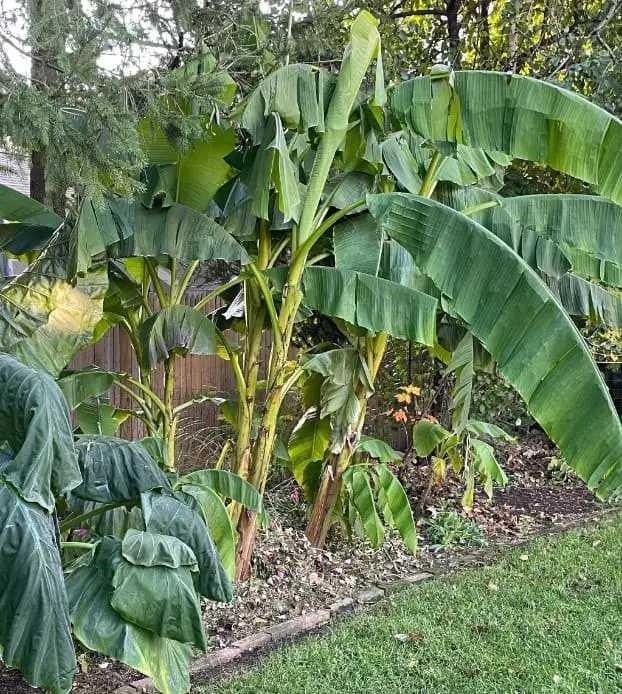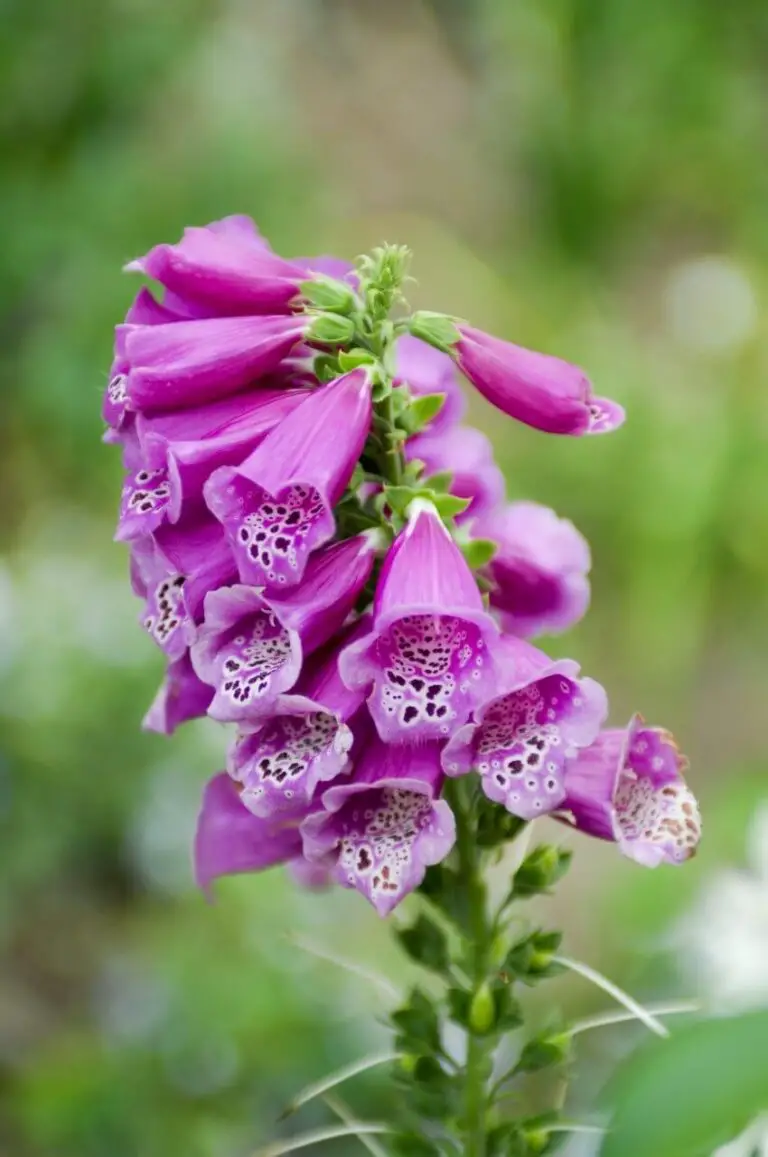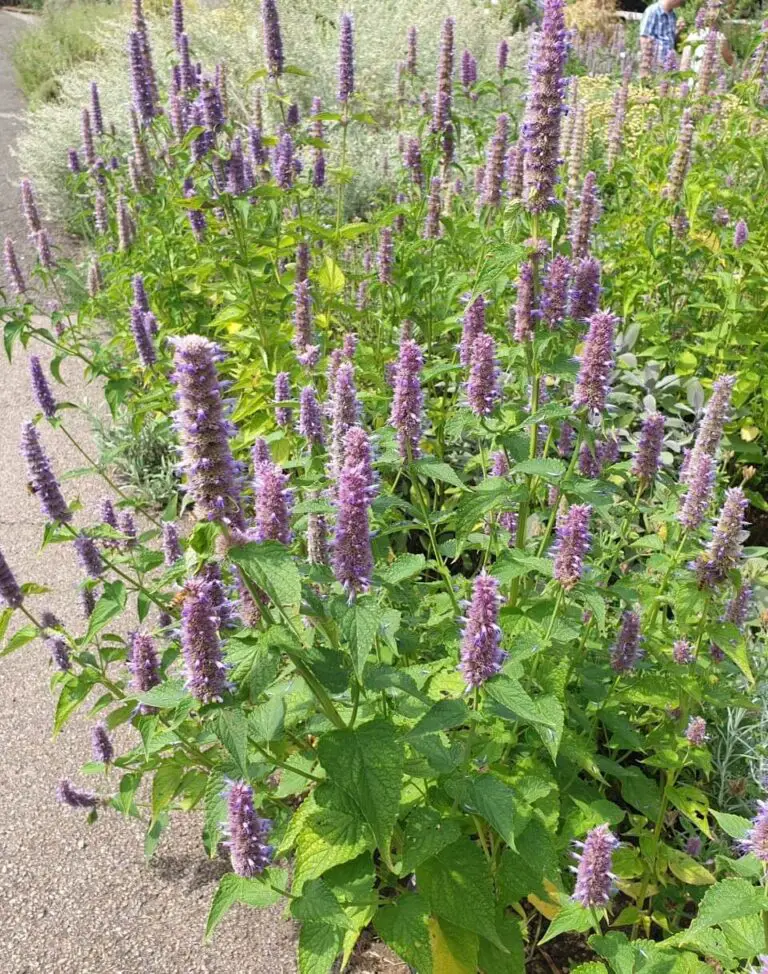7 Types Of Aspen Trees: Leaves, Bark, Flowers, Identification (Photos)
Aspen trees are renowned for their stunning fall foliage, but did you know there’s more to these trees than just their autumnal appeal? In this article, we’ll delve into the world of aspen trees, exploring their unique characteristics, benefits, and how to care for them. One of the most distinctive features of aspen trees is their leaves, which are typically shaped like a heart or a maple leaf. The bark of an aspen tree is also notable, with horizontal grooves that give it a distinctive texture.
In addition to their leaves and bark, aspen trees produce small flowers in the spring. This article will also cover the benefits of having an aspen tree, from its ability to purify the air to its role in supporting local ecosystems. We’ll also provide tips on how to identify an aspen tree, including a look at its root system and a breakdown of the different types of aspen trees that exist. From Bigtooth Aspen to Quaking Aspen, we’ll explore the various species and their unique characteristics.
Whether you’re looking to learn more about these stunning trees or are simply interested in how to care for one, this article has got you covered.
What is an aspen tree?
Aspen trees, part of the poplar family, are deciduous natives to North America, Europe, and Asia. Their slender trunks and rounded leaves make them stand out. The trees’ most striking feature is their vibrant fall foliage, which transforms into a brilliant yellow or golden hue. The aspen’s white bark, smooth and often marked by black streaks, adds an extra layer of visual appeal.
It’s no wonder landscapers and homeowners alike adore aspens for their ease of care and adaptability to various soil and climate conditions.
Facts about Aspen Tree.
The quaking aspen is a remarkable species that boasts an impressive range across North America. Spanning from Alaska to Newfoundland, and from California to the Great Plains, these trees can be found thriving in their natural habitats. But its distribution isn’t limited to North America; they’re also prevalent in northern Europe and Asia. Despite their relatively small stature, with trunk diameters reaching only about two feet, aspens have a remarkable ability to live for centuries.
The oldest recorded aspen tree was an astonishing 130 years old, a testament to their remarkable longevity. As a vital component of the ecosystem, aspens play a crucial role in providing sustenance and shelter for a diverse array of animals, including bears, deer, birds, and small mammals. Moreover, their abundance helps prevent soil erosion, underscoring their importance in maintaining ecological balance.
Aspen tree lifespan.
Aspen trees have earned a reputation for their remarkable longevity in North America, with some individuals reaching an astonishing 600 years or more. In fact, the oldest recorded aspen tree, situated in Utah, is believed to be around 80,000 years old – a testament to the species’ incredible resilience. While the average lifespan of an aspen tree falls between 40 and 150 years, their lifespans can be influenced by various factors, including disease, pests, and environmental conditions.
For instance, aspens growing in dry or poor soil are more susceptible to drought-related mortality. Furthermore, the trees are vulnerable to a range of pests and diseases that can significantly shorten their lifespan.
Despite their relatively short lifespans, aspen trees play a vital role in many ecosystems. They serve as a vital food source and shelter for various wildlife, including birds, small mammals, and insects.
Moreover, aspens contribute to soil stabilization and erosion prevention, making them an integral component of these ecological systems.
Aspen Tree Leaves.
The distinctive characteristics of an aspen tree’s foliage include its small, oval-shaped leaves that exhibit a smooth surface and paired arrangement on the stem. During the summer months, these leaves are a vibrant green, while in autumn, they transform into stunning shades of yellow or red. As deciduous trees, aspens shed their leaves during winter, but some species display a remarkable golden hue before relinquishing them.
Aspen Tree Bark.
The distinctive bark of an aspen tree features a unique combination of characteristics, with its smooth, white exterior bearing a prominent black stripe running down the center. Measuring thin and papery in texture, the bark can be easily stripped away in long, thin strips. In contrast, the inner bark reveals a vibrant yellow-green hue. As the tree matures, its bark gradually darkens and becomes increasingly roughened.
Aspen tree root system.
Aspen tree root systems possess a captivating distinctiveness. Notably, the extensive network of roots can stretch up to 100 feet from the trunk, showcasing an impressive capacity for regeneration following damage or pruning. In contrast, these roots are remarkably shallow, extending only a few feet beneath the earth’s surface. This unique feature enables Aspen trees to rapidly colonize areas, often resulting in vast groves or ‘clones’ of identical trees.
Furthermore, the tree’s root system is adept at storing water, thereby facilitating its survival during dry spells or droughts.
How to Identify an Aspen Tree.
Aspens, a staple of North America’s tree landscape, boast a striking appearance characterized by their smooth, white bark and slender leaves. Interestingly, these deciduous trees are native to Alaska, making them one of the few species that can thrive in this harsh climate.
For botanists and nature enthusiasts alike, identifying an aspen tree is relatively straightforward.
The first telltale sign is the shape and arrangement of its leaves, which are small, oval, and sharply pointed at the tips. Moreover, aspens display a unique paired leaf arrangement on their stems, setting them apart from most other trees that exhibit alternate leaf placement.
Another distinctive feature is the tree’s bark, which is remarkably smooth and white, often taking on a subtle greenish hue.
Furthermore, this thin bark allows for a glimpse into the inner layer of bark, providing an added layer of identification.
Lastly, aspens are distinguished by their slender, curved, or drooping branches that terminate in small buds, offering yet another way to confirm the tree’s identity.
Types of Aspen Trees.
Aspen trees have garnered popularity among landscaping professionals and enthusiasts alike, largely due to their striking autumn hues and remarkable adaptability to diverse climates and soil conditions. With multiple species offering distinct characteristics and advantages, it’s no wonder why these trees have become a sought-after choice for many gardeners and landscapers. Let’s explore some of the most well-known types of Aspen trees, each boasting its own unique features and benefits.
Bigtooth Aspen (Populus grandidentata).
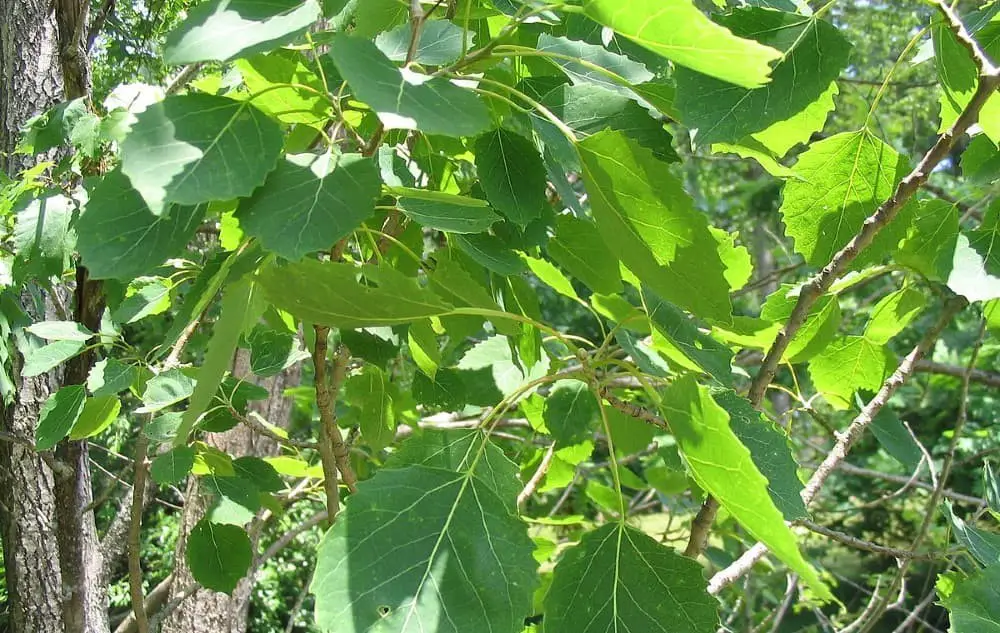
In the eastern regions of North America, a deciduous tree species stands out for its unique characteristics: the bigtooth aspen (Populus grandidentata). Also known as the large-toothed aspen, this medium-sized tree boasts a conical to rounded crown that reaches 20-30 meters in height and 15 centimeters in trunk diameter. Its bark is a striking greenish-white to grayish-brown color, punctuated by distinctive black diamond-shaped lenticels.
The bigtooth aspen’s leaves are simple and ovate, with serrated margins and a long petiole. As the seasons change, these leaves turn a vibrant yellow in autumn. The tree’s flowers are borne in erect catkins, relying on wind pollination to reproduce. Its fruit is a small capsule containing numerous tiny seeds. As a keystone species, the bigtooth aspen plays a vital role in eastern North American forests.
It is a pioneer species that often establishes itself first after a disturbance, paving the way for other trees to follow. These long-lived trees can live up to 400 years and reproduce both vegetatively through root growth and sexually through seeds. Despite being shade-intolerant, bigtooth aspens require full sun to thrive.
Their wood is highly valued for construction, flooring, furniture, and paper production, while the tree itself serves as a vital food source for various animals like bears, deer, rabbits, squirrels, and beavers.
Chinese Aspen (Populus adenopoda).
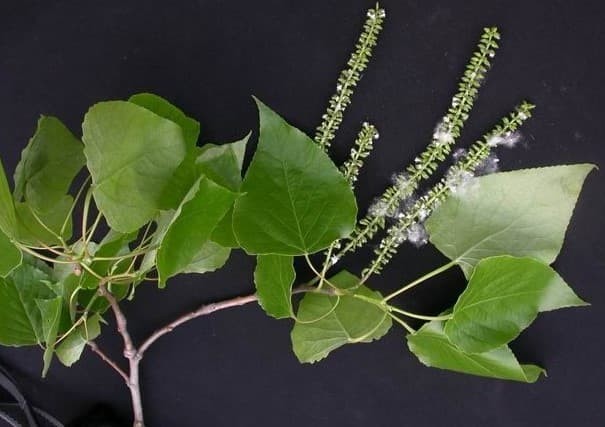
The Chinese aspen tree, native to China, is a remarkable species of poplar tree. Its impressive height ranges from 30-40 meters, with trunk diameters reaching up to 60 centimeters. The leaves, measuring up to 12 centimeters in length, are oval-shaped and play a vital role in the tree’s ecosystem. In the spring, the Chinese aspen produces small, greenish-yellow flowers that add to its charm. This versatile tree thrives in China’s forests, mountainsides, and valleys.
Its wood, characterized by a light weight and soft, spongy texture, is often utilized for paper pulp and fuelwood production. Furthermore, the leaves have been used in traditional Chinese medicine, showcasing the tree’s multifaceted importance. As an integral component of China’s ecosystems, the Chinese aspen provides crucial habitats for various animals and birds, while its leaves serve as a vital food source for grazing animals like deer and goats.
The wood also finds applications in traditional crafts such as basket-making and wood carving. In conclusion, the Chinese aspen tree is a valuable species that plays a significant role in China’s ecological landscape.
European Aspen (Populus tremula).
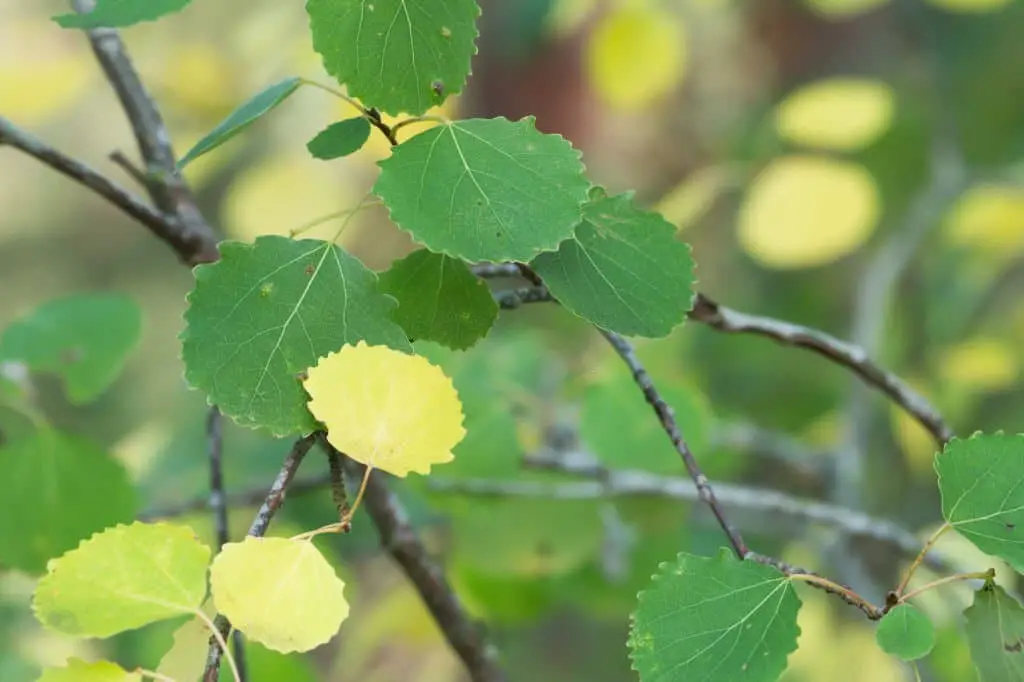
The aspen tree, scientifically known as Salix alba, is a deciduous member of the willow family that also goes by the monikers white poplar or popple. One of its most distinctive features is its triangular-shaped leaves with serrated edges, which are attached to long stems that quiver in even the gentlest breeze – a characteristic that has earned it the name ‘tremula’.
These leaves shed annually, turning a vibrant golden yellow before falling off, leaving behind bare branches until new growth appears in spring. The aspen tree can grow rapidly, reaching heights of up to 50 feet (15 meters) and sporting a straight, slender trunk with smooth grayish-white bark. Found throughout Europe, Asia, and North America, the aspen tree thrives in areas with full sunlight and moist soil, most commonly inhabiting European mountain ranges.
Japanese Aspen (Populus sieboldii).
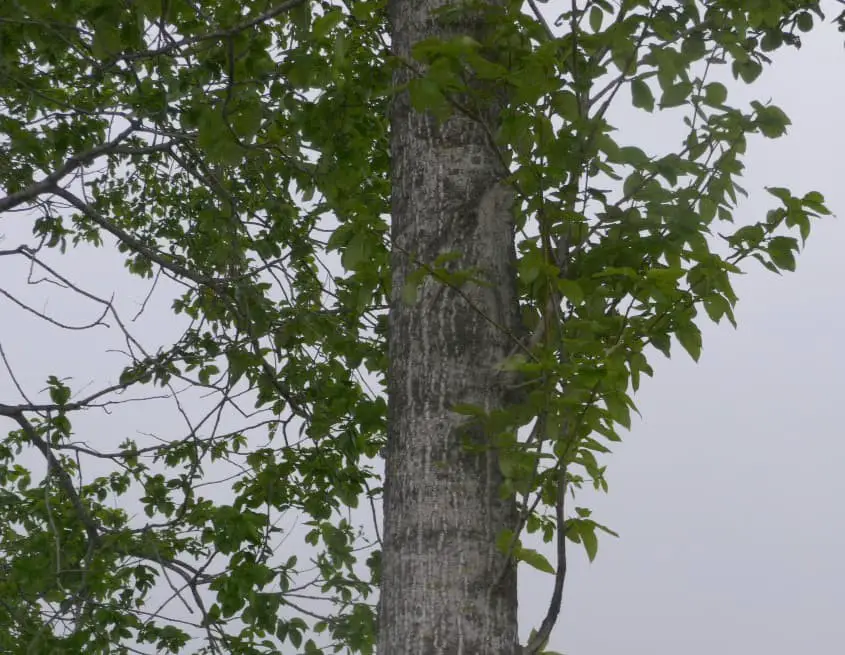
The Japanese aspen tree, native to Japan, boasts impressive dimensions – its mature height ranges from 30-40 meters (98-131 feet), with a sturdy trunk diameter of 0.75-0.90 meters (29.53-35.43 inches). The tree’s leaves are distinctive, featuring an alternate arrangement and ovate shape with toothed margins. As the seasons change, these dark green leaves transition to a vibrant yellow hue in autumn.
In spring, small, greenish-yellow flowers emerge, followed by spherical capsules containing numerous seeds. This versatile tree is often utilized as an ornamental species in gardens and parks, where its striking foliage can be admired. Additionally, the wood of the Japanese aspen tree possesses unique properties, making it well-suited for paper production due to its soft and lightweight nature.
Korean Aspen (Populus davidiana).
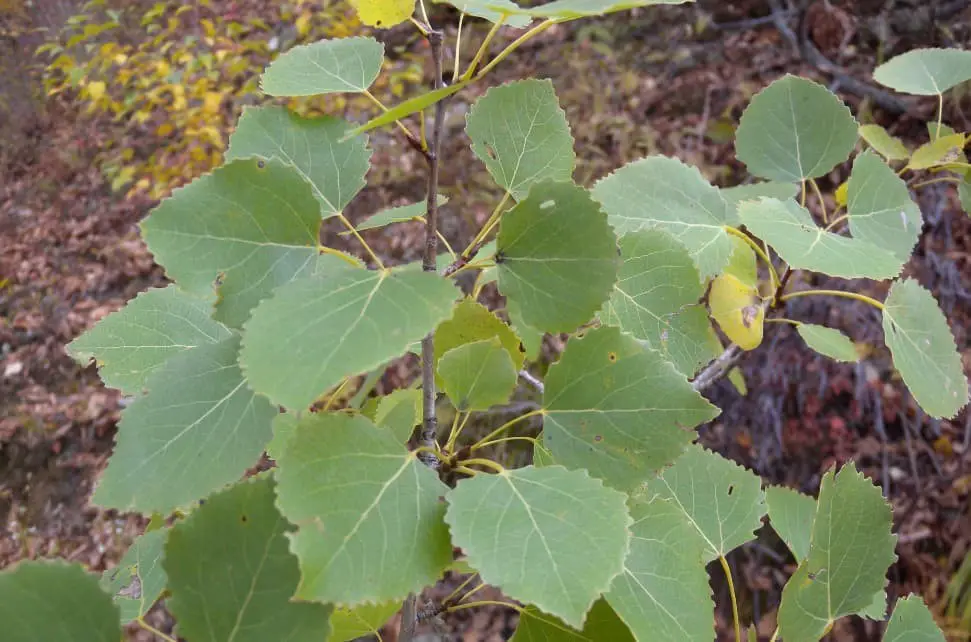
In the willow family, the Korean aspen stands out as a species that thrives in the regions of North Korea and China. Its majestic height reaches 20-30 meters, making it an impressive sight to behold. The ovate-shaped leaves and yellowish-green flowers are just as striking. While its physical attributes are noteworthy, the Korean aspen’s true value lies in its multifaceted uses.
It provides timber, fuelwood, and paper products, while also being used in traditional Korean medicine, demonstrating its versatility and importance to the community. Despite this, the Korean aspen has been classified as an endangered species by the IUCN due to deforestation and over-exploitation, which has led to a significant decline in its population. To combat this trend, conservation efforts are underway, focusing on reforestation, protected areas, and public awareness initiatives.
As a symbol of strength and perseverance, the Korean aspen holds immense cultural and natural significance for Korea. Its people have a deep reverence for the tree, recognizing its value not only for practical uses but also as a testament to their nation’s heritage.
Quaking Aspen (Populus tremuloides).
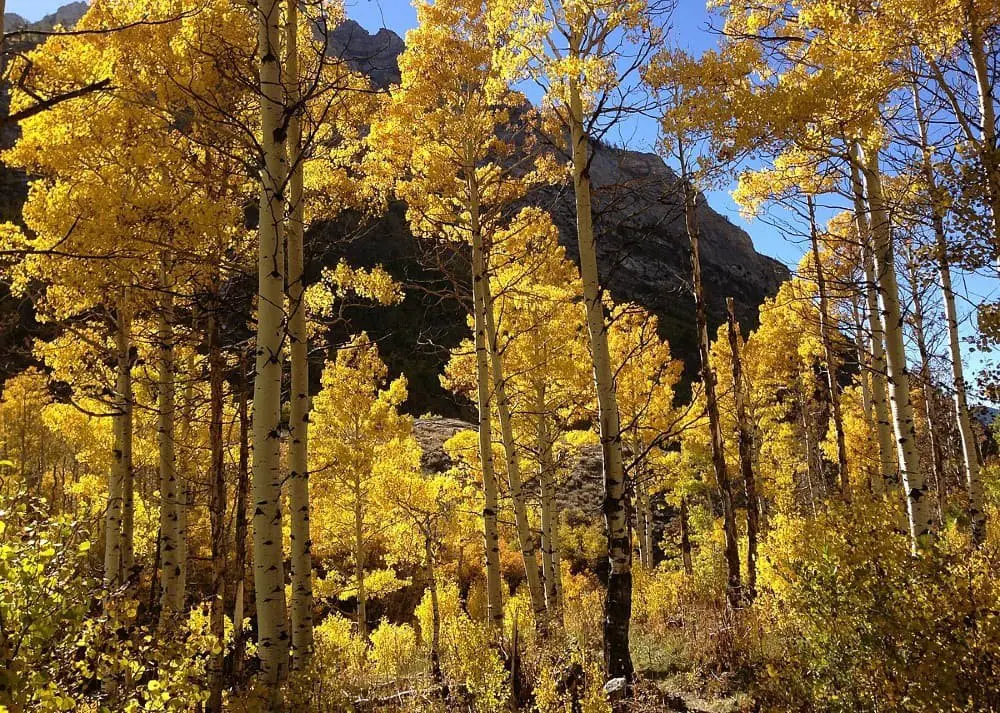
In the vast expanse of North America, one deciduous tree stands out for its remarkable adaptability and fascinating reproductive habits – the quaking aspen. Its leaves’ gentle tremble in the breeze has earned it its name, and its widespread distribution is a testament to its hardiness. From coast to coast, excluding only Hawaii, this versatile tree can be found thriving in every Canadian province and US state.
As a popular choice for urban landscaping, quaking aspens excel in a range of soil conditions and can weather droughts with ease. They grow rapidly, reaching heights of 50 feet (15 meters) within two decades. But their most intriguing feature is undoubtedly their ability to reproduce asexually through root suckering. A single tree can give rise to thousands of clones, making it a veritable queen of the forest.
When an aspen meets its demise, its roots often persist, sending up new shoots that allow the tree to live on for centuries – or even millennia. This remarkable resilience is mirrored in the important ecological role quaking aspens play. They provide sustenance and shelter for bears, deer, rodents, birds, and other creatures. Moreover, their wood is a valuable resource for humans, making them an integral part of North America’s ecosystems.
Swedish Aspen (Populus tremula ‘Erecta’).
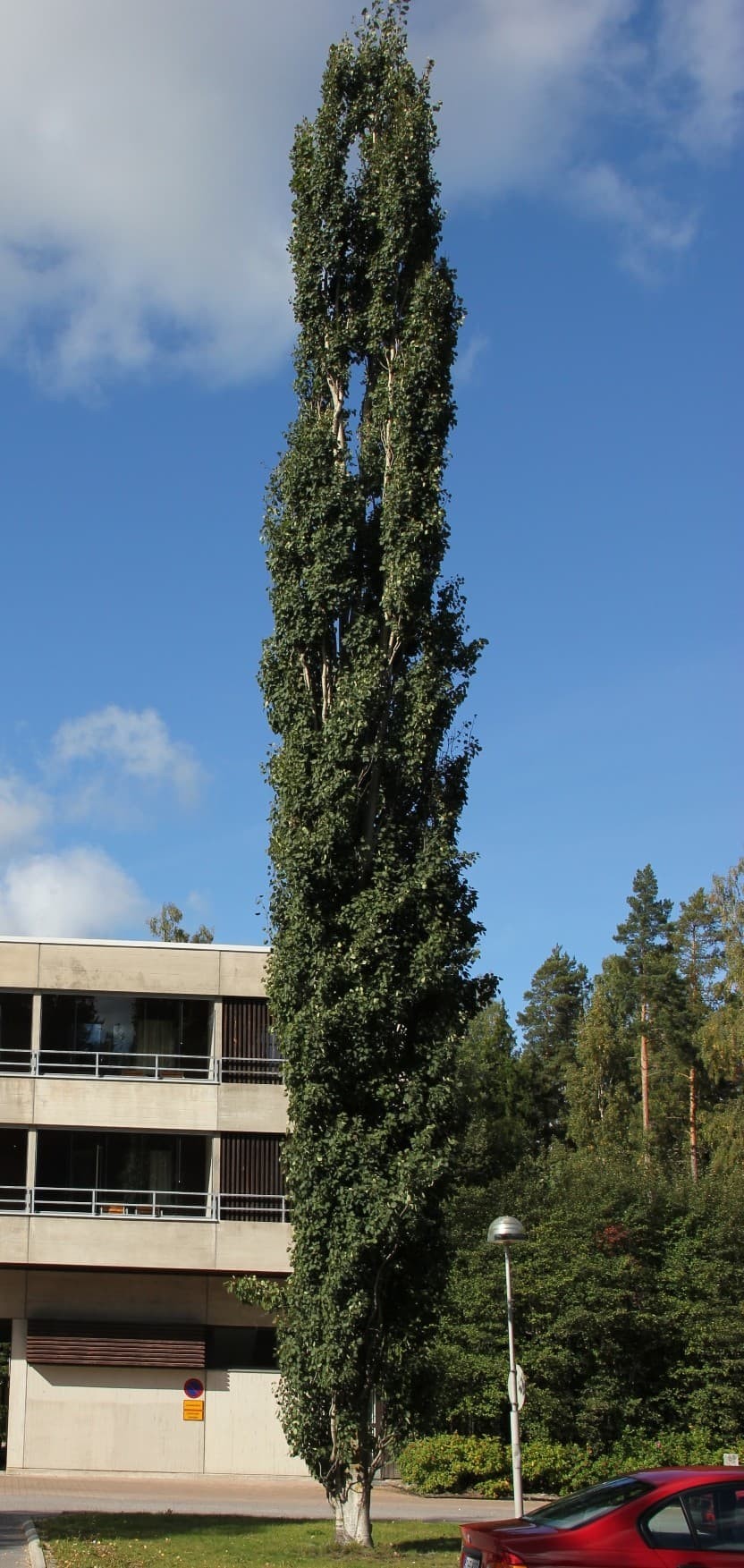
The Swedish aspen tree, a cultivar of the European aspen (Populus tremula), boasts impressive growth rates and a striking appearance. Reaching heights of 50-70 feet (15-21 meters), this deciduous tree’s leaves are ovate in shape with pointed tips and serrated edges. The upper leaf surface is green, while the underside features a pale green or yellow-green hue. In early spring, Swedish aspen trees produce small, greenish-yellow flowers, followed by capsules containing two seeds each.
Native to Europe, this tree has been successfully introduced to North America and other parts of the world, often serving as an ornamental choice for gardens and parks. Swedish aspens demonstrate remarkable hardiness, tolerating cold winters and hot summers alike. They thrive in full sun but can also adapt to partial shade conditions. Furthermore, they are drought-resistant and can flourish in clay soils.
While individual Swedish aspen trees have a relatively short lifespan of 20-40 years, they possess the ability to reproduce vegetatively through root suckers, allowing them to form clones that can persist for centuries.
FAQs about Aspen Trees
Are aspen and poplar the same tree?
While aspen and poplar trees share a common genus, Populus, they are distinct species with unique characteristics. Native to North America, aspen (Populus tremuloides) differs from its European and Asian counterpart, poplar (Populus nigra), in several key ways. One notable difference is the bark: aspens boast smooth, white bark, whereas poplars feature rough, scaly dark bark.
Additionally, aspen leaves are smaller and more triangular in shape compared to the larger, more lance-shaped leaves of poplars.
What is the difference between quaking aspen and trembling aspen?
Both quaking aspen and trembling aspen belong to the poplar family and exhibit deciduous characteristics. While they share a similar appearance, distinct differences set them apart. Quaking aspen are native to North America, whereas their counterparts, trembling aspen, originate from Europe and Asia. The stature of these trees also differs, with quaking aspen growing up to 50-70 feet tall, while trembling aspen typically reach heights of 30-40 feet.
Furthermore, the leaves of quaking aspen are slightly larger than those of trembling aspen, featuring more rounded leaf margins due to their unique attachment stems. The name ‘quaking’ aspen originates from the characteristic quivering or ‘quaking’ motion of its leaves in response to wind, a phenomenon attributed to the flattened stems attaching the leaves to the tree. In contrast, trembling aspen’s leaves are attached with slightly longer stems, resulting in a less pronounced quivering effect.
Both species are valued for landscaping and forestry projects due to their rapid growth rate and relatively low maintenance requirements. However, quaking aspen exhibit greater cold tolerance and can thrive at higher elevations than trembling aspen.
What is the difference between aspen and a birch tree?
Aspen trees, being deciduous, shed their leaves annually, whereas birch trees persist with their foliage year-round as evergreens. The average lifespan of an aspen is significantly shorter than that of a birch, with aspens typically living for around 40 years compared to the 150-year lifespan of some birches. In terms of physical characteristics, aspen bark is smooth and white, whereas birch bark is darker and rougher.
Another notable distinction lies in their tolerance to cold temperatures, with birches exhibiting greater hardiness than aspens. Furthermore, while both species can be found in North America, aspen trees are native to the continent, whereas birches have a broader global distribution, being also prevalent in Europe, Asia, and other regions.
How to care for aspen tree.
When it comes to maintaining the beauty of an aspen tree in your landscape, a little extra care can go a long way. To ensure your tree remains healthy and thriving, consider these key tips: First, adopt a deep but infrequent watering schedule that allows you to soak the roots thoroughly, rather than providing frequent shallow waterings. Aspens tend to prefer this type of hydration. Next, give your aspen tree a boost in the spring with a balanced fertilizer application.
This will help provide essential nutrients for healthy growth. Regular pruning is also crucial to remove any dead or damaged branches that could potentially harm the overall health of the tree. Finally, don’t forget to mulch around the base of your aspen tree, which will help retain moisture and protect the roots from damage. By following these simple tips, you’ll be well on your way to keeping your aspen tree happy and healthy for years to come.
Conclusion
As we bring our discussion to a close, it’s essential to highlight that there are three distinct categories of aspen trees: quaking aspens, bigtooth aspens, and trembling aspens. Each of these types boasts its own set of unique characteristics that contribute to their individual appeal. Beyond their inherent charm, aspen trees play a vital role in the natural world, offering numerous benefits to the environment.
If you’re contemplating the addition of a tree to your yard, consider giving an aspen some thought – it’s unlikely you’ll be left feeling disappointed.
Related Posts
Transforming your outdoor space into a lush oasis is now easier than ever. Online plant nurseries offer an impressive range of tree species, from majestic Apple Trees to the evergreen staples that provide year-round foliage. For those who want to take their passion for trees to the next level, becoming an arborist offers a rewarding career in tree care. But how do you get started? This guide covers everything you need to know to begin your journey as a tree expert.
Meanwhile, property owners are discovering the profound impact that trees can have on their homes’ curb appeal – and sometimes removing them is just as important as planting new ones. And for those looking to grow something sweet, tips on cultivating organic Blueberry Plants will be music to your ears. Whether you’re an urban gardener or a seasoned green thumb, there’s always more to learn about the wonderful world of plants.


